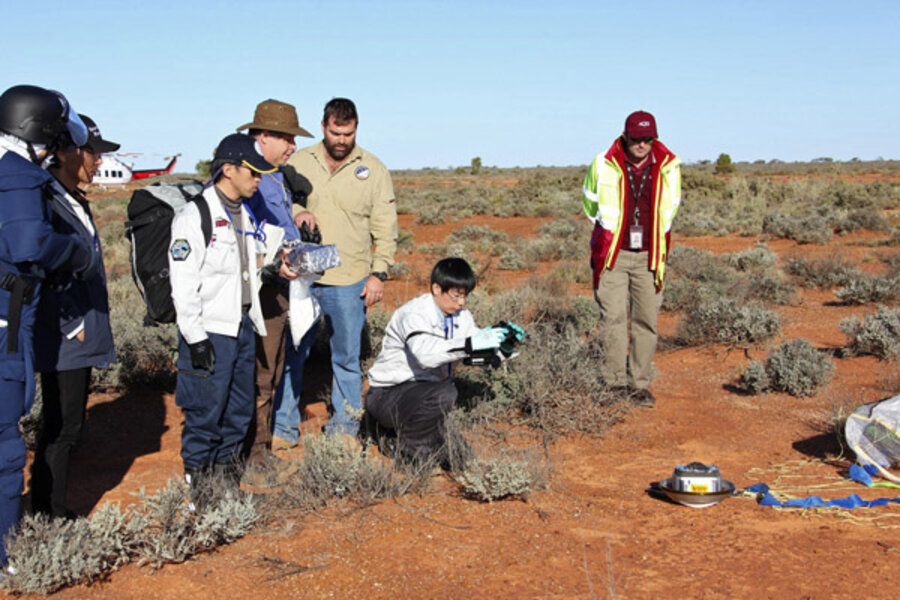Japanese space probe makes fiery return to Earth
Loading...
A Japanese space capsule returned to Earth and plunged through the atmosphere over the Australian outback Sunday, capping a seven-year space journey that took it to a nearby asteroid in a historic attempt to collect pieces of a billion-year-old space rock.
The capsule, released by Japan's Hayabusa asteroid probe, returned around 10 a.m. EDT (1400 GMT) in the Woomera Prohibited Area of South Australia.
The re-entry capsule, which may contain a precious space rock sample, separated from the rest of the spacecraft about three hours before it plummeted down to Earth.
IN PICTURES: Asteroids
The small 16-inch wide canister planned to land with the help of a parachute and a heat shield to protect it from the fiery temperatures of reentry. The rest of the Hayabusa spacecraft was expected to burn up in Earth's atmosphere. [Graphic: How Japan's Hayabusa Asteroid Mission Worked]
The probe will be recovered and transported back to Japan, where scientists will open it and find out whether it succeeded in returning a piece of the asteroid.
The return was monitored by an envoy from NASA, which sent scientists to observe the probe's re-entry through Earth's atmosphere to study how its heat shield performed.
"The capsule comes in with the speed of a natural meteor – an asteroid if you like," said Peter Jenniskens of the SETI Institute in Mountain View, Calif., principal investigator of the NASA observation project. "The velocity is incredible."
A precious sample
Hayabusa, a mission of the Japanese Aerospace Exploration Agency (JAXA), had a long and tumultuous voyage of roughly 1.25 billion miles (2 billion kilometers). In 2005, the probe landed on the asteroid 25143 Itokawa and attempted to dig up a sample to return to Earth.
Glitches during this process prevented the sample collection from going as planned, but scientists are still hopeful that the probe was able to pick up some asteroid dust or pebbles to bring back with it.
"We won't know for a long time because the capsule will be recovered, hopefully, and then brought to Japan and opened there," Jenniskens told SPACE.com.
Even of "only a couple of particles much smaller than a grain of sand" were collected, they would be extremely useful for scientific research, since they would be the first pieces of a space rock ever returned by a robotic mission, said NASA's Don Yeomans, the U.S. project scientist for the Hayabusa mission.
Long journey
Over the years Hayabusa has run into a number of snags that forced an extra three years to be added on to its mission. A fuel leak, communications loss and ion engine problems were just a few that threatened to kill the asteroid probe before it could ever return home.
"They've had so many challenges they've overcome," Yeomans said. "They lost their batteries, they lost their attitude control system, they lost two of the three reaction wheels."
"They've had to start using duct tape and bailing wire and chewing gun to correct for these things," he joked.
That's why it's so gratifying to many of the researchers who've worked on the project that the spacecraft is finally home safe.
"It's very exciting," Jenniskens said. "It's an incredible achievement by JAXA to actually go and visit an asteroid, land on it, try to collect materials and bring it back to Earth. The fact that they've been able to bring it back to Earth is incredible."
- 5 Reasons to Care About Asteroids
- Gallery - Hayabusa: Japan's Asteroid Mission
- Graphic: How Japan's Hayabusa Asteroid Mission Worked
IN PICTURES: Asteroids





